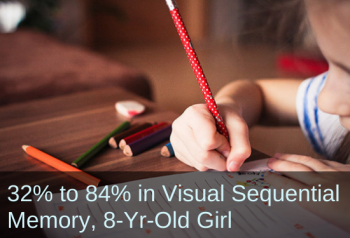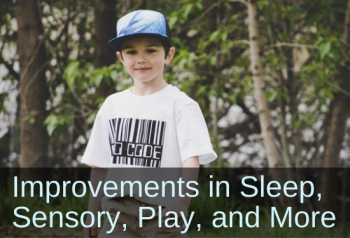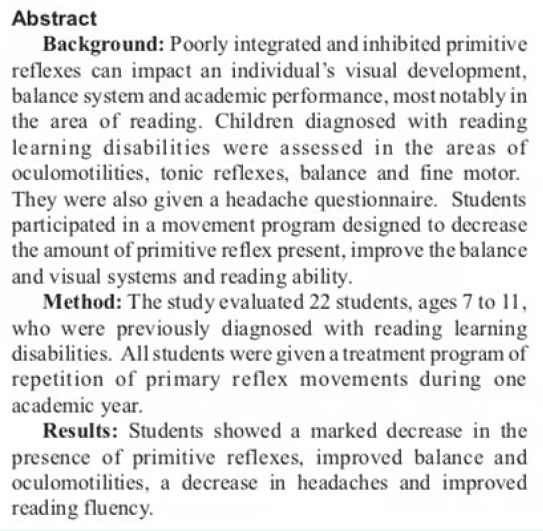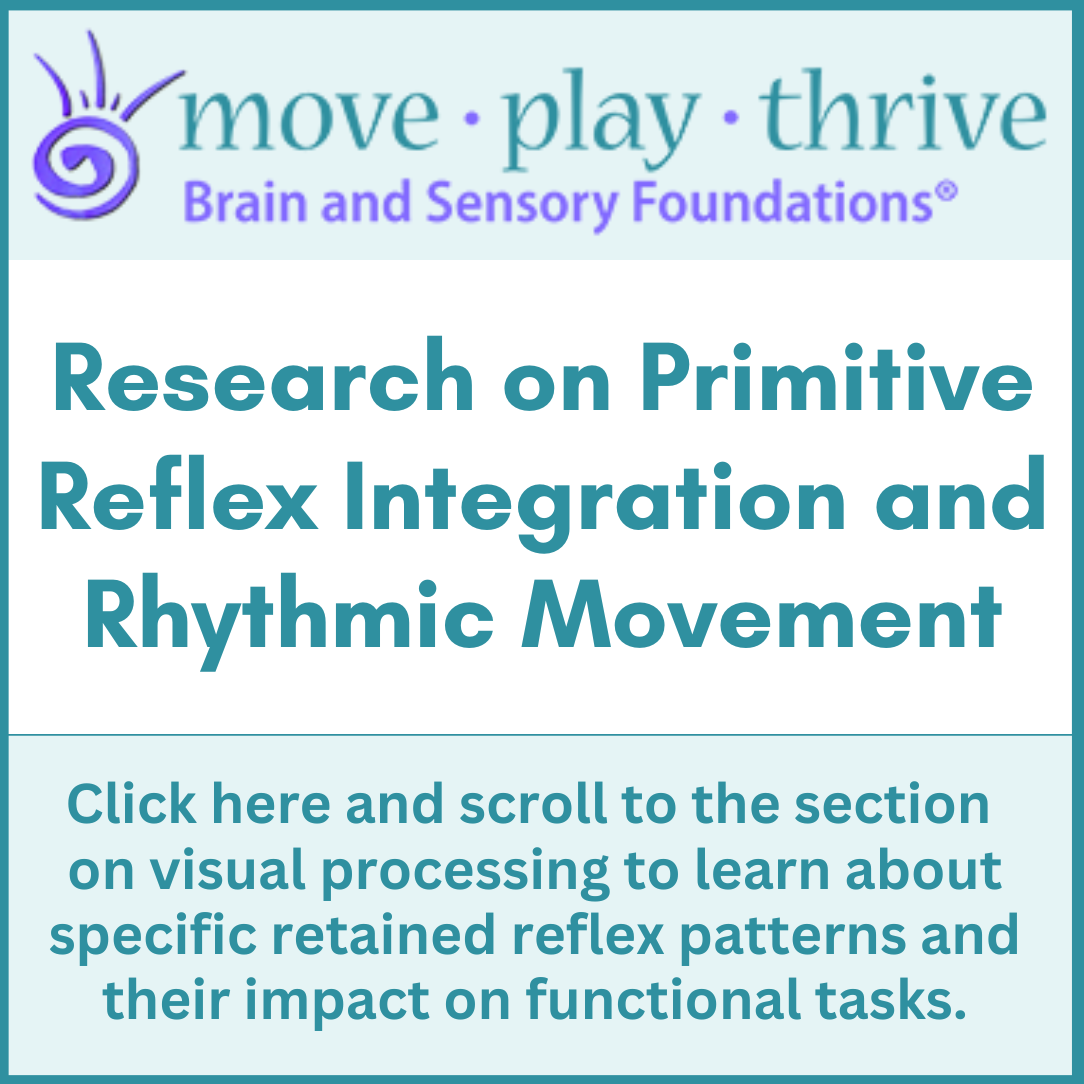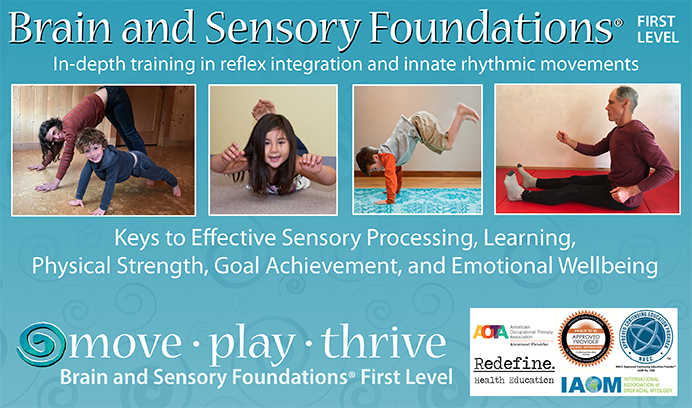For more information about innate movements, subscribe to our free monthly newsletter!
Greetings,
What is the relationship between unintegrated reflexes and visual processing issues? What about infant rhythmic movements? How do they affect vision? What does the research say? What do vision doctors say about this? (Hint: Look for the GAME CHANGER post below.)
There is a lot to share about this and I am excited to put it together in one newsletter for you to enjoy and share! If you (or anyone you know) wants to find out about why rhythmic movements and reflex movements can help with vision, this is for you!
Thanks for being here on this journey with me. I appreciate any help you can give to spread the word about the benefits of innate movements.
Sincerely,
Sonia Story
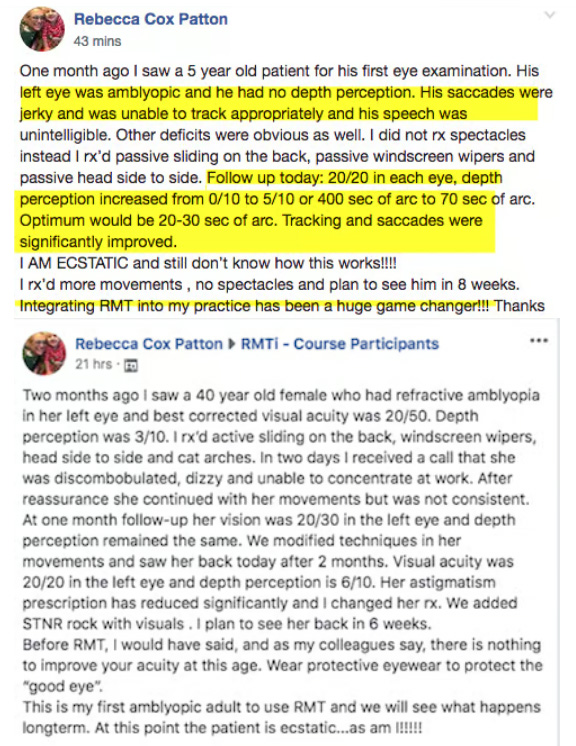 |
ALL ABOUT VISION.: Research tells us there is a significant * * * What about innate rhythmic movements? if we connect the dots Dr. Blomberg's simple explanation for why the innate rhythmic |
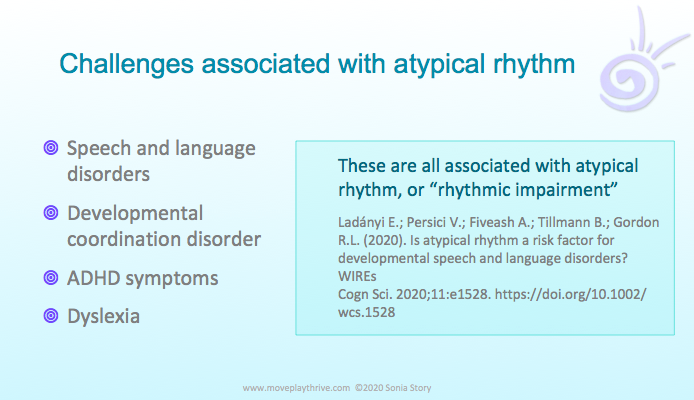
Other research shows that the cerebellum is critical for the ability to read (Alvarez & Fiez, 2018) and that cerebellar deficits are linked with reading challenges (Nicolson et al., 2001). Since the innate rhythmic movements help the cerebellum to mature and to function better, that could help with both visual skills and reading ability. A second point made by Dr. Blomberg is that the innate rhythmic movements mature the brainstem. Once the brainstem is mature, it can better moderate muscle tone. Proper muscle tone is crucial to the development of the eye muscles for visual skills. Integration of primitive reflexes is just as important to the development of visual skills as the innate rhythmic movements. And the combination of the two is excellent for vision as you can see here: |
|
This case study shares a week-by-week description of this OT's work using rhythmic movements and primitive reflex integration. See the difference these tools made for a 4-year-old's visual motor skills. Thank you to Michele Riak OTR/L for this case study. |
|
This little girl struggled with visual memory and tracking skills. Find out how
rhythmic movements and primitive reflex integration made a big difference -- the numbers are impressive! Thank you to Sue Lapp OTR/L for this case study. |
|
|
4-Yr-Old Boy with ASD: Better Interoception,
Speech, Vision, and Focus with Innate Movements See how rhythmic movements and primitive reflex integration helped this 4-year-old boy experience improvements in visual tracking, as well as language, sensory issues, and sleep. Thank you to LW, OTR/L for this case study. For more information about the online Brain and Sensory Foundations courses, go here. |
|
*Research on the benefits of reflex integration movements for visual skills
|
|
**The following two research summaries (excerpted below) were written by Sally Goddard from
Reflexes, Learning and Behavior: A Window into the Child’s Mind. (emphasis added). |
|
"If eyesight is found to be normal but there is a cluster of abnormal reflexes, a reflex stimulation/inhibition program can make a profound difference to both oculo-motor and visual-perceptual skills. A vision therapist working in the Netherlands found that he achieved the greatest success if he delayed vision therapy until a child had at least six months on a reflex stimulation/inhibition program. In many cases, vision therapy was not required after the reflexes had matured. In those cases where residual oculo-motor problems remained, the time needed on a vision therapy program was halved (Ten Hoopen 1995)." "In 2001, Bein-Wierzbinski, a former postgraduate student at Institute for NeuroPhysiological Psychology, presented the findings of a study of 52 elementary school children in Germany. She had investigated whether disturbances in oculo-motor function and visual perception could be corrected by means of an appropriate motor training program which focused on early motor development and primitive reflexes. All of the children were examined for abnormal reflexes, and eye movements were assessed using an infra-red computerized eye-tracking machine. One half of the children who had abnormal reflexes were given a reflex stimulation/inhibition program. The other half were examined both at the beginning and the end of the program but were not included in any training. A further six children who had reading and writing problems but no abnormal reflexes were also assessed at the beginning and the conclusion of the study to document any developmental improvements which might have occurred normally during the intervening time. She found improvement in oculo-motor functioning and reading skills as persistent reflexes were corrected. Oculo-motor defects continued to persist in the control group, who had not received specific motor-training exercises." Below are highlights from a recent study on how integration of primitive reflexes can help with visual issues |

"The results suggest a relationship between the body and the visual system, as well as between inhibition of PRs and improvement in VP. We establish that PR inhibition balances visual asymmetries and improves visual fixation. Around 80% of the children improved . . ." (Domingo-Sanz, 2022, p 192). Here is one other piece of the puzzle about why the primitive reflexes are so important for vision: Human beings are innately wired to develop our visual systems in infancy--and this visual development cannot fully happen without the action of the primitive reflexes! You can read more on this theme here or tap the graphic below. If you come across more research or insights about vision and innate infant movements, please This email address is being protected from spambots. You need JavaScript enabled to view it.! References
Alvarez, T. A., & Fiez, J. A. (2018). Current perspectives on the cerebellum and reading development. Neuroscience & Biobehavioral Reviews, 92, 55-66.*Andrich, P., Shihada, M., Vinci, M., Wrenhaven, S., & Goodman, G. (2018). Statistical relationships between visual skill deficits and retained primitive reflexes in children. Optometry and Visual Performance, 6(3), 106-111. (Sometimes this study is listed with Goodman as the primary author) **Domingo-Sanz, V., (2022). Inhibition of primitive reflexes and its relationship with visual projection in children and adolescents. Optometry & Visual Performance, 10(4), 183-196. *Goddard Blythe, S. (2017). Attention, balance and coordination: The ABC of learning success. John Wiley & Sons. *Gonzalez, S. R.; Ciuffreda, K.; Hernandez, L. C.; Escalante, J. B. (2008). The correlation between primitive reflexes and saccadic eye movements in 5th grade children with teacher-reported reading problems. Optometry and Vision Development, 39(3), 140-145. Ladányi, E., Persici, V., Fiveash, A., Tillmann, B., & Gordon, R. L. (2020). Is atypical rhythm a risk factor for developmental speech and language disorders? Wiley Interdisciplinary Reviews: Cognitive Science, 11(5), e1528. Nicolson, R. I., Fawcett, A. J., & Dean, P. (2001). Developmental dyslexia: the cerebellar deficit hypothesis. Trends in neurosciences, 24(9), 508-511. **Wahlberg, T., & Ireland, D. (2005). Can replicating primary reflex movements improve reading ability?. Optometry & Vision Development, 36(2). |
|
|
Be empowered with the Brain and Sensory Foundations course.
Train the Brain for Functional Gain!


